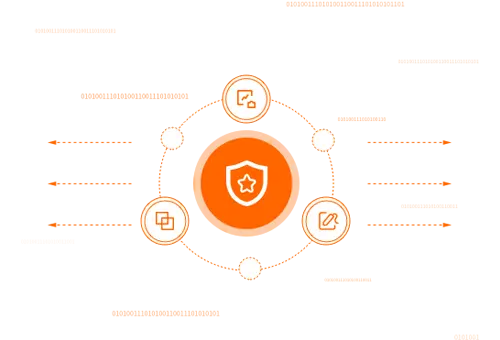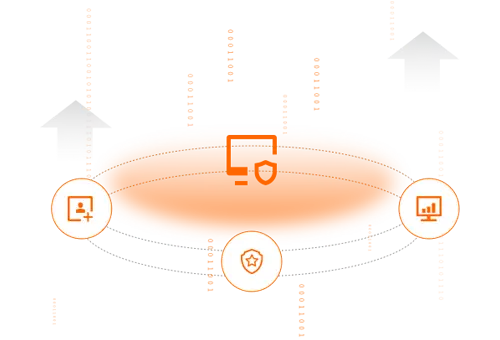The traditional registration method has some problems, such as user information fraud, fake registration, etc.
It is impossible to screen out criminals through scientific and technological means to reduce potential safety hazards
Insufficient information verification for SIM card copy, verification and replacement results in security risks
Multiple subscriptions and fraudulent subscriptions of services result in property losses
It is difficult to register SIM cards in remote areas and cannot prevent the black market of SIM cards
When individuals or organizations need to subscribe to services, they must fill in the same information registration repeatedly, resulting in serious repeated waste
The data collected by various operators cannot be managed uniformly, forming a data island
The biometric device in mobile with sim card supports users to collect biometric information in business halls or remote areas.
If the country or region has a national biometric database, the telecom biometric database can be connected with the national biometric database and synchronize the basic data of SIM cards.
Apply for SIM card biometric registration or collect information in the business hall
Users provide certificates for sim card biometric registration or identity verification
Biometric information collection devices are used in the business halls to collect users' fingerprints, faces, irises and other biometric features
Upload biometric information to the telecom biometric database, and use the unified biometric management platform to check data duplication
If duplicate biometric identification information is found, confirm and update the personnel information in biometric database; If no duplicate biometric information is found, bind the biometric information with SIM card information and basic personnel information, store data into the telecom biometric database, and issue the SIM card
Due to the frequent problems of signal shortage and power shortage in remote areas, it is impossible to collect normally as in business hall.
Therefore, it is necessary to carry out devices that can ensure normal offline collection.
Users provide the identity certificate, and the staff records the identity information.
Use biometric information collection devices to collect users' biometrics such as fingerprints, faces and irises offline, and save the biometric data into the device.
Synchronize the biometric data collected offline to the machine, upload data to the telecom biometric database, and use the biometric unified management platform to check the data duplication.
If duplicate biometric information is found, mark the corresponding information in the system and confirm with the user later; If no duplicate biometric information is found and the identity information is verified, bind the biometric information with SIM card information and basic personnel information, store data into the telecom biometric database, and issue the SIM card.

Based on the core biometric technology - dual camera face recognition, iris scanner for sale, optical scanner fingerprint, finger vein recognition algorithm and multimodal algorithm( iris face recognition ), Eyecool Technology created and provided the service of multimodal fusion recognition algorithm, effectively improving the applicability of biometric technology to different people and different scenes.

For SIM card business, operators synchronize data to the telecommunications administration in real time from acquisition and comparison, verification to result feedback, so as to ensure the timely reporting of data in various regions, avoid data tampering, destruction due to late reporting, and the data is stored in the state-owned information database, ensuring the privacy and security of the data.

Relying on core biometric algorithms, from biometric devices to biometric information service capability platform, Eyecool opens standardized interfaces, supporting third-party rapid access, providing professional services, maintenance and support, and realizing the overall solution of end-to-end integrated closed-loop business.

For SIM card registration and management, relevant data are reported to the national telecommunication biometric database in real time, which can be connected with the national biometric database. As a biometric capability provider, we connect the preceding and the following. The upstream realizes real-time data reporting, and the downstream realizes standardized capability interface, realizing the upstream and downstream information exchange, and solving the problem of data island.

The future of SIM card registration management is not only information registration, but also management and security. Criminals can be avoided effectively through information-based means, big data analysis, and SIM card biometric registration. Registration of biometric information can expand the docking of other national businesses, and provide auxiliary decision-making for national security development through the intelligent analysis and prediction of national important business data.

Support international and remote SIM registration; Fight against theft, crime and terrorism; Crack down on illegally imported equipment; Protect the safety of people's lives and property; Comply with local regulations and regulatory requirements.
ECO500 is a 4-4-2 optical fingerprint scanner certified by the FBI IAFIS IQS Appendix F of the United States, designed specifically for the toughest and largest scale work. The portable device adopts an IP54 rated casing, which is dustproof and moisture-proof, allowing it to complete fingerprint collection tasks even in harsh environments. The finger graphic indicator light on the ECO500 panel facilitates guiding the operator to collect fingerprints at various finger positions.
EyeCool Fingerprint and finger vein collector (ECX150) is a high-performance multimodal acquisition device that integrates dual biometrics of fingerprints and finger veins. Equipped with fingerprint and finger vein recognition algorithms developed by EyeCool, it can output high-quality finger vein and fingerprint images with a single press.
ECO320 is an optical fingerprint capture module certified by FBl PIV and Mobile lDFAP20. It adopts the "dynamic fingerprint template fusion technology" with independent intellectual property rights of Eyecool, and has won the second prize of the "National Technological lnnovation Award" in China.
ECSM329 fingerprint reader module is a high-performance fingerprint capture/identification module independently developed by Eyecool Technology. Certified by FBI PIV, it meets the general technical requirements of the fingerprint collector for ID cards and easy for third-party product integration.